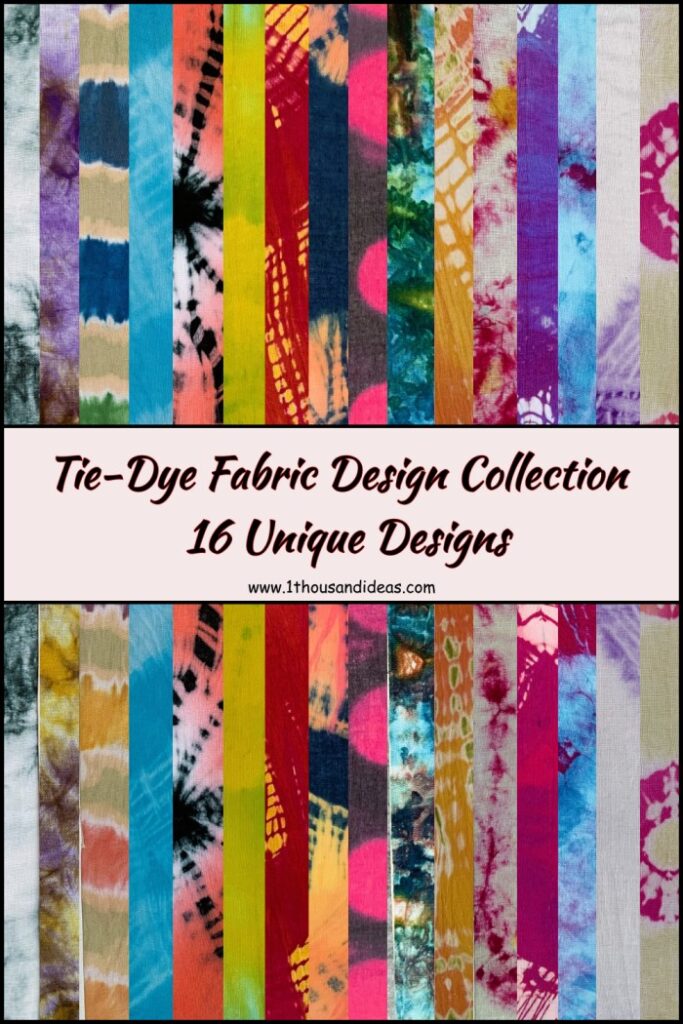
Tie-Dye Fabric Design has always been a celebration of color, creativity, and individuality. From its playful swirls to its unexpected patterns, no two pieces are exactly alike.
In this post, we highlight a remarkable student art project, “Tie-Dye Fabric Design Collection.” It is a large spiral-bound presentation book featuring 16 original tie-dye fabric designs, each displayed in a unique and eye-catching way.
Instead of just showing swatches, the student designed a professional display format:
- Each page features two pieces of chart paper pasted together, with a perfectly cut square in the middle.
- We placed the Tie-Dye Fabric Design in the cutout, turning it into framed works of art.
- The spiral binding makes it easy to flip through and admire each design individually.
This approach not only displays the designs beautifully but also makes the project feel like a high-end fabric design portfolio.
Why This Tie-Dye Project Stands Out
Most tie-dye projects focus on creating patterns. This project goes further by focusing equally on presentation. The framing technique with chart paper draws attention to the fabric, highlighting the colors and patterns without being distracting.
This is a great example for students of how art isn’t just about making something—it’s also about how you express it. This mindset is valuable for future artists, designers, and anyone working in visual presentation.
The Creative Variety of the 16 Designs
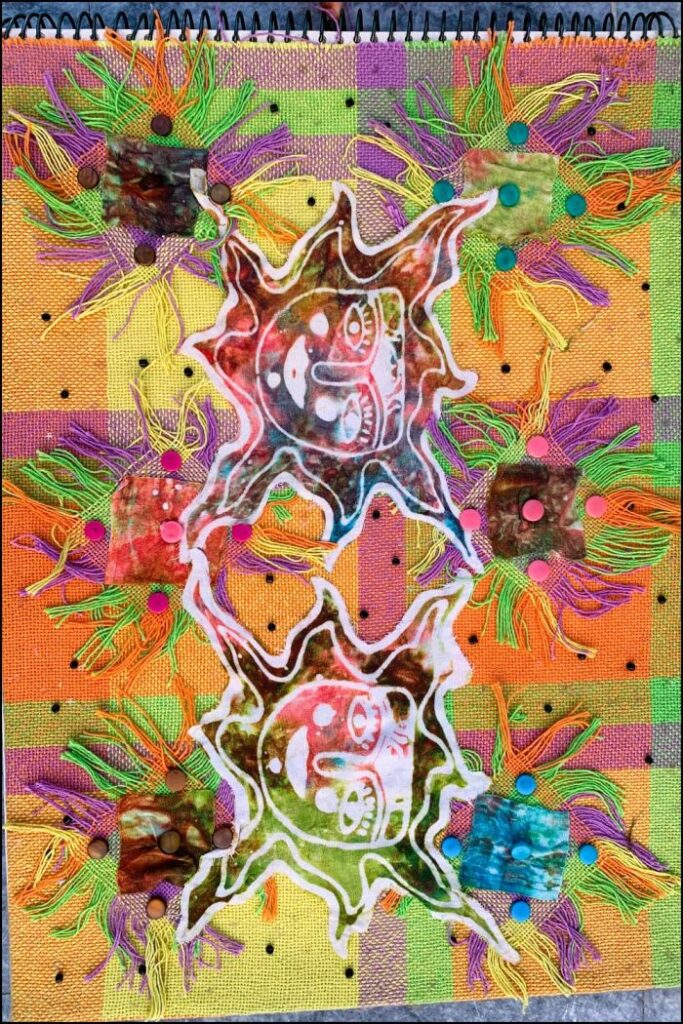
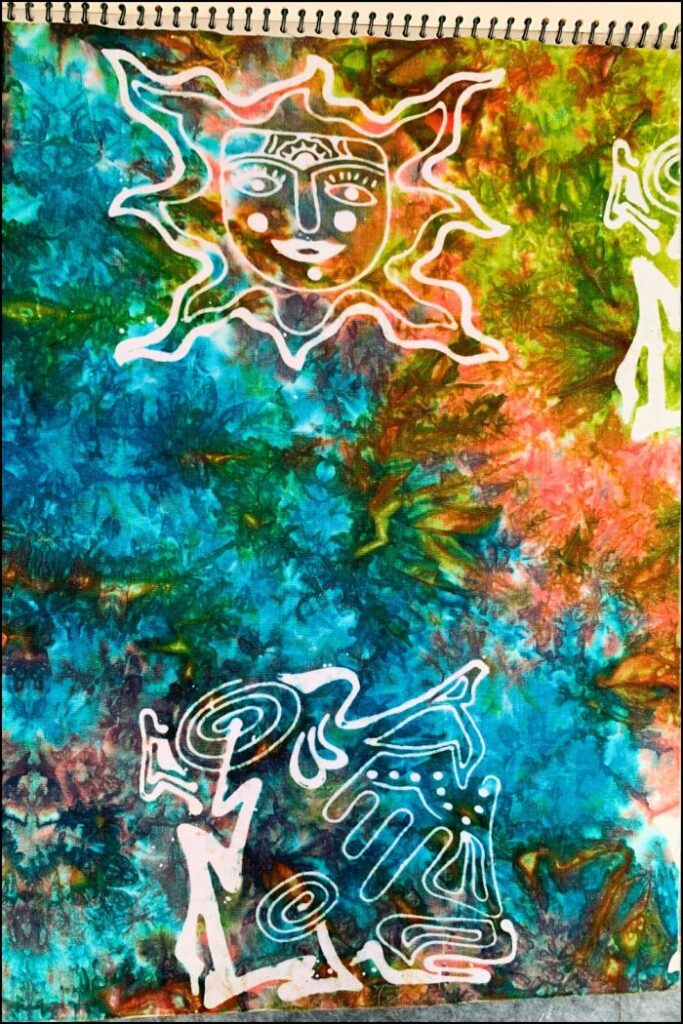
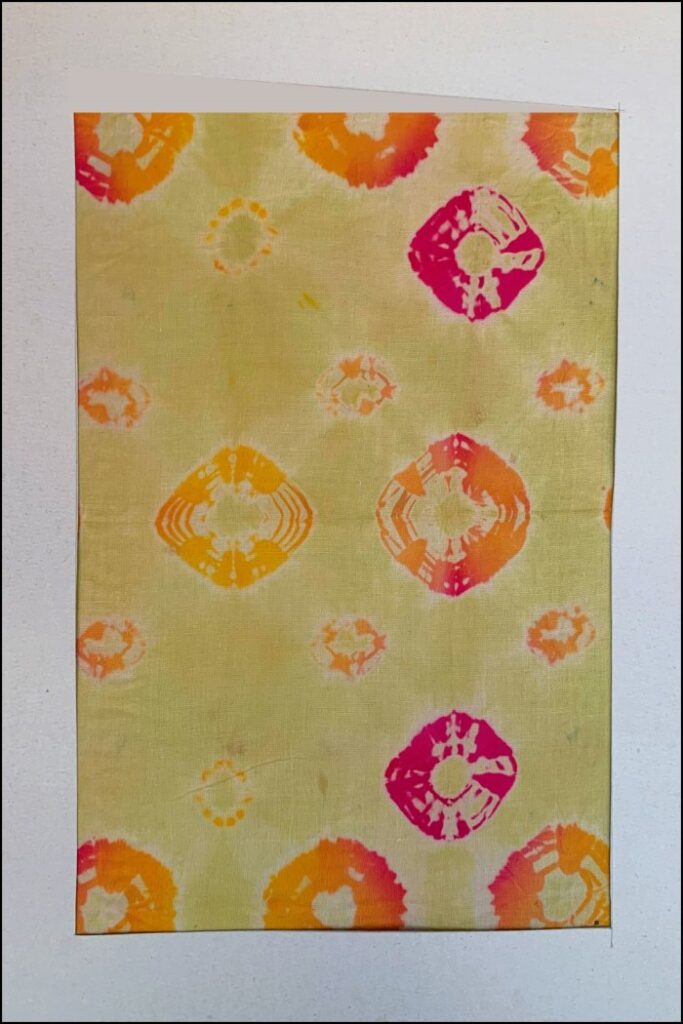
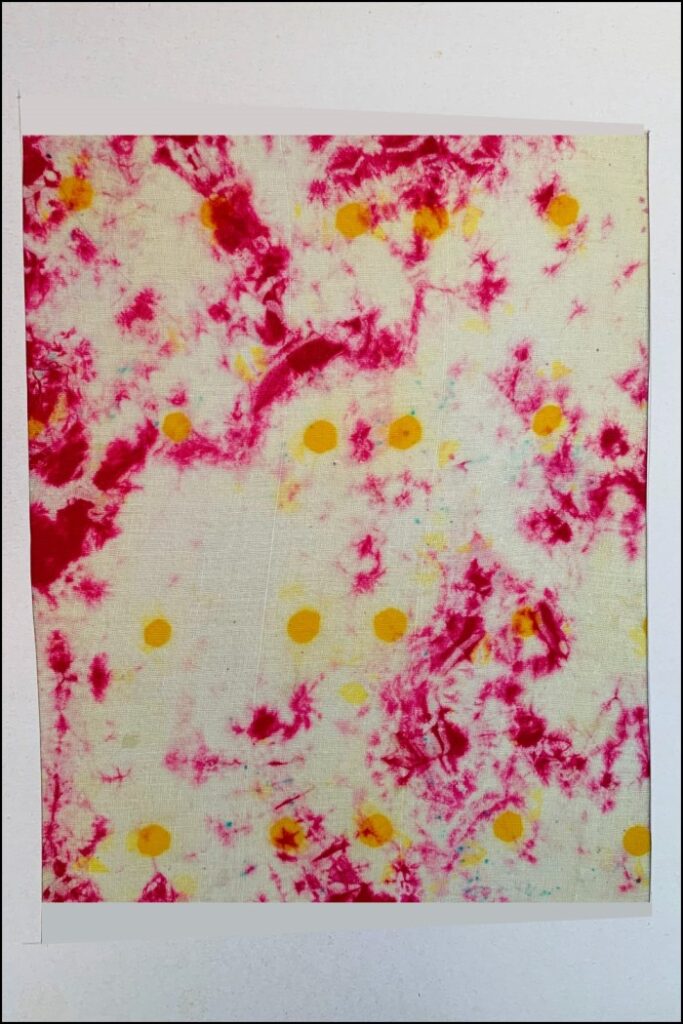
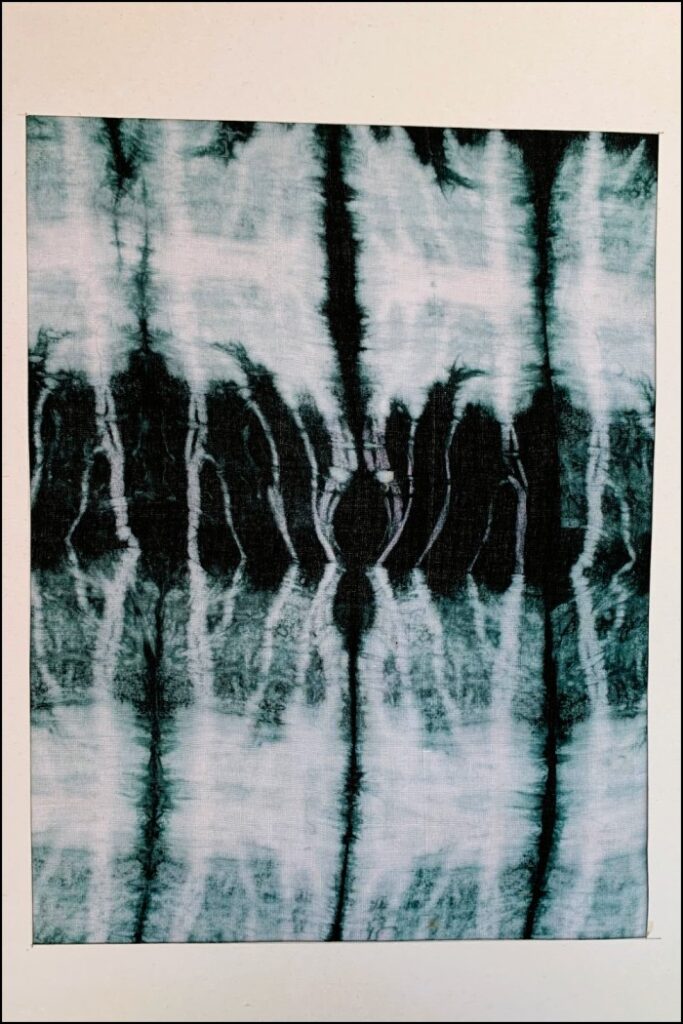
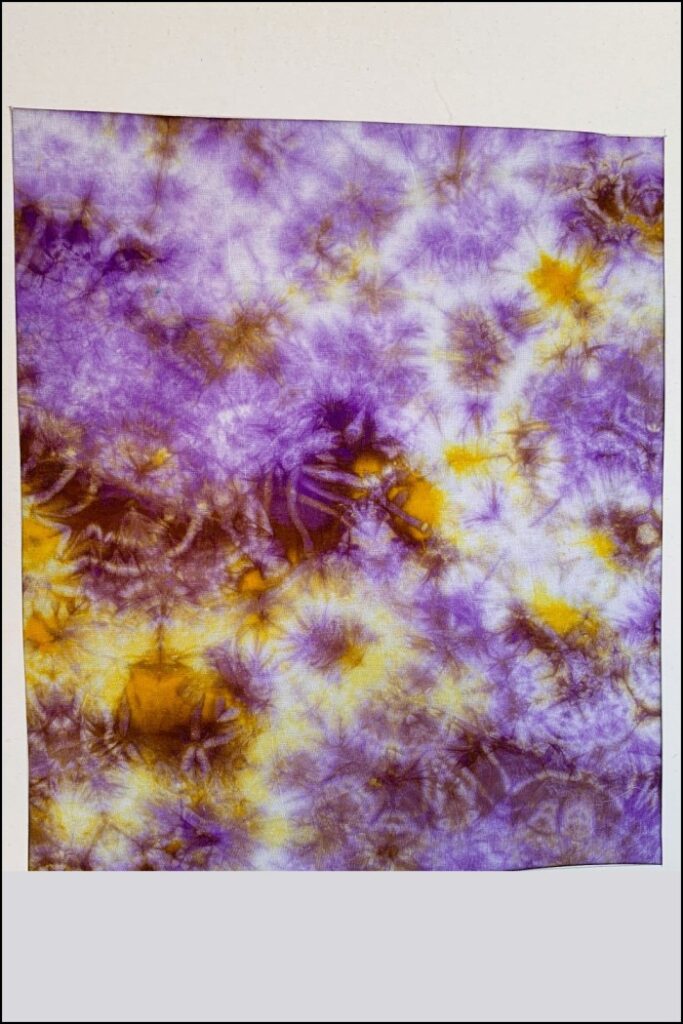
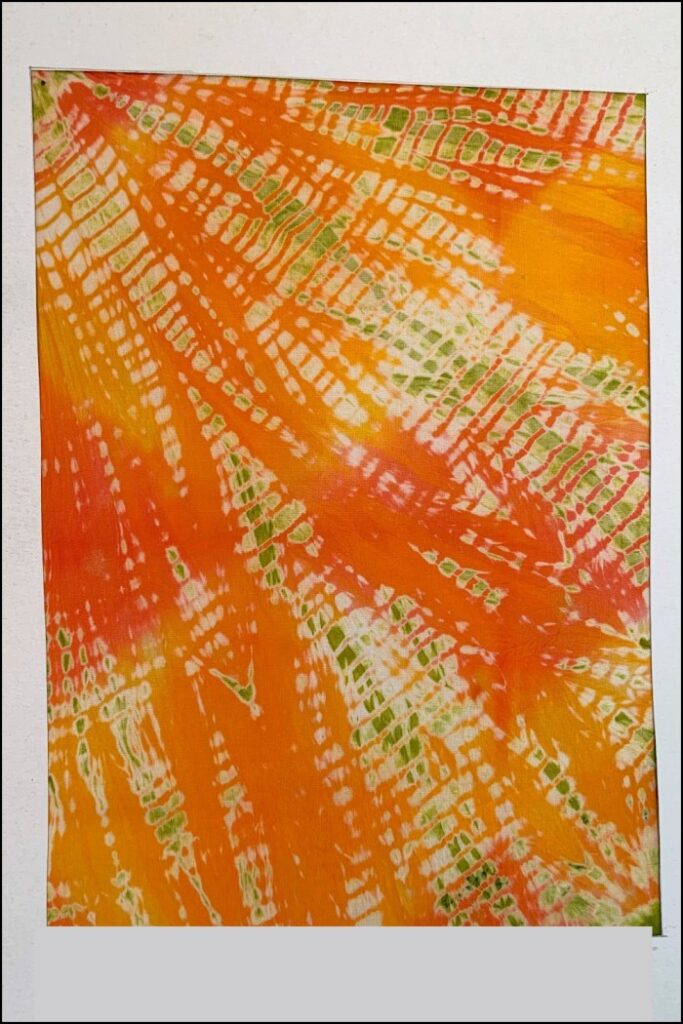
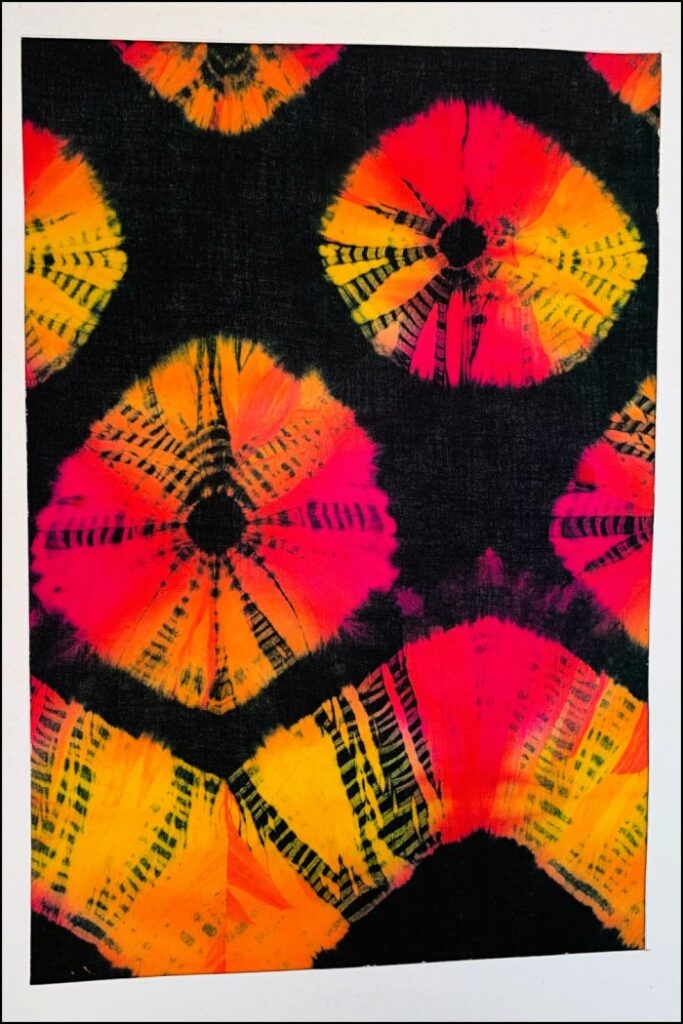
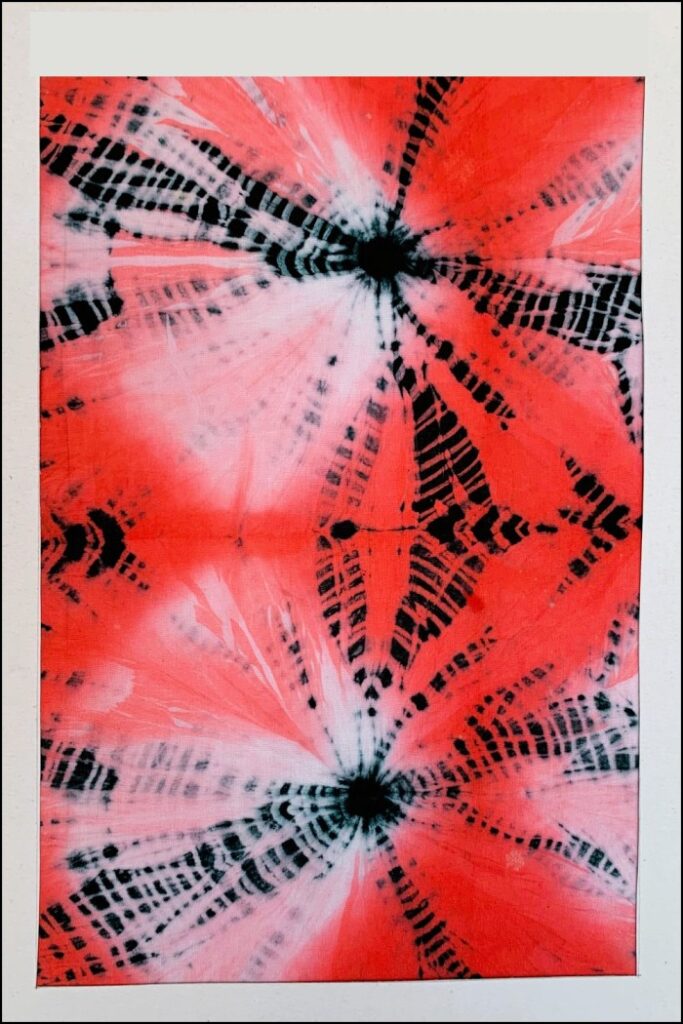
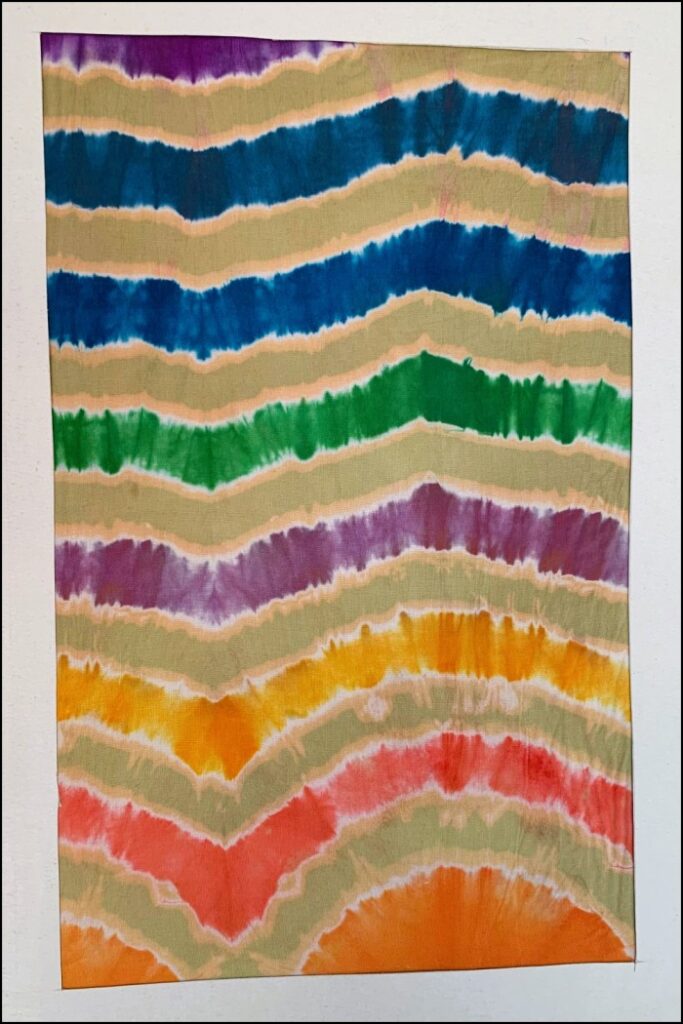
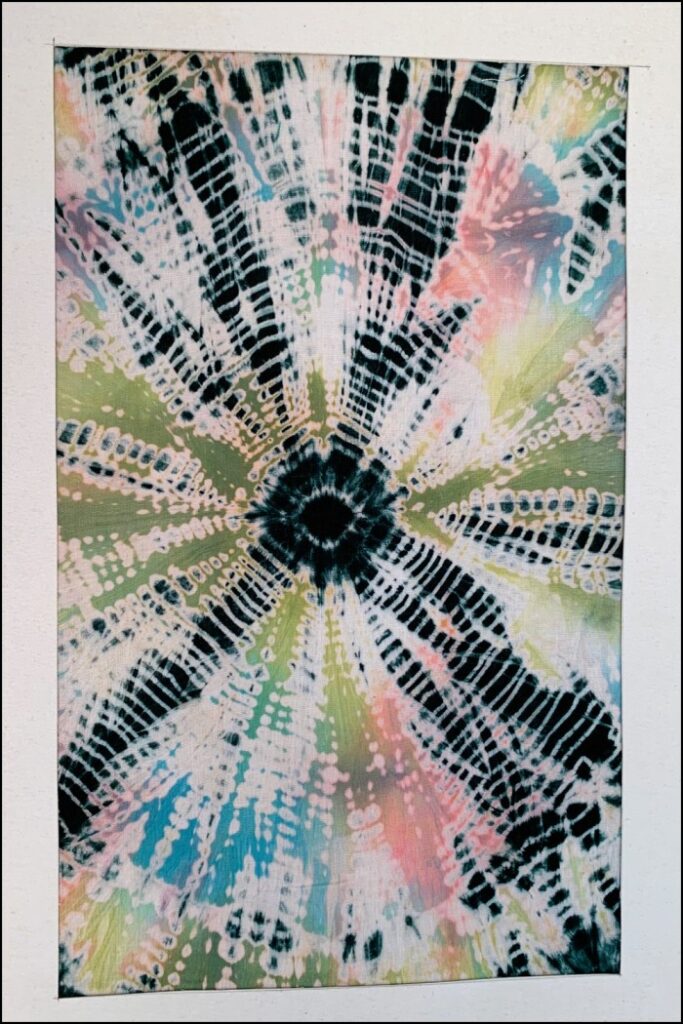
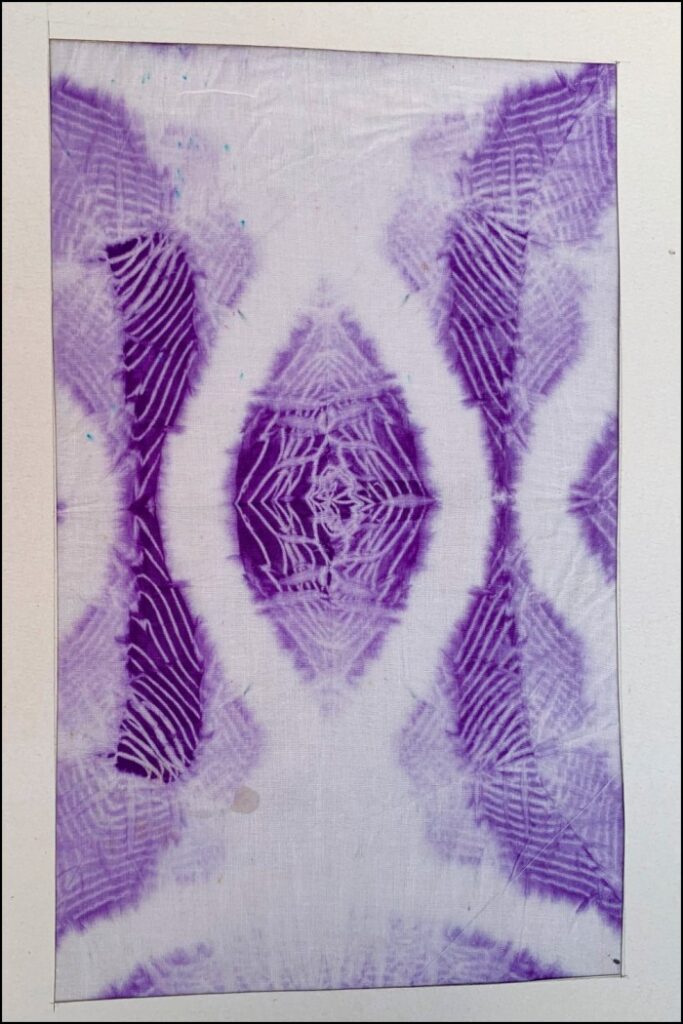
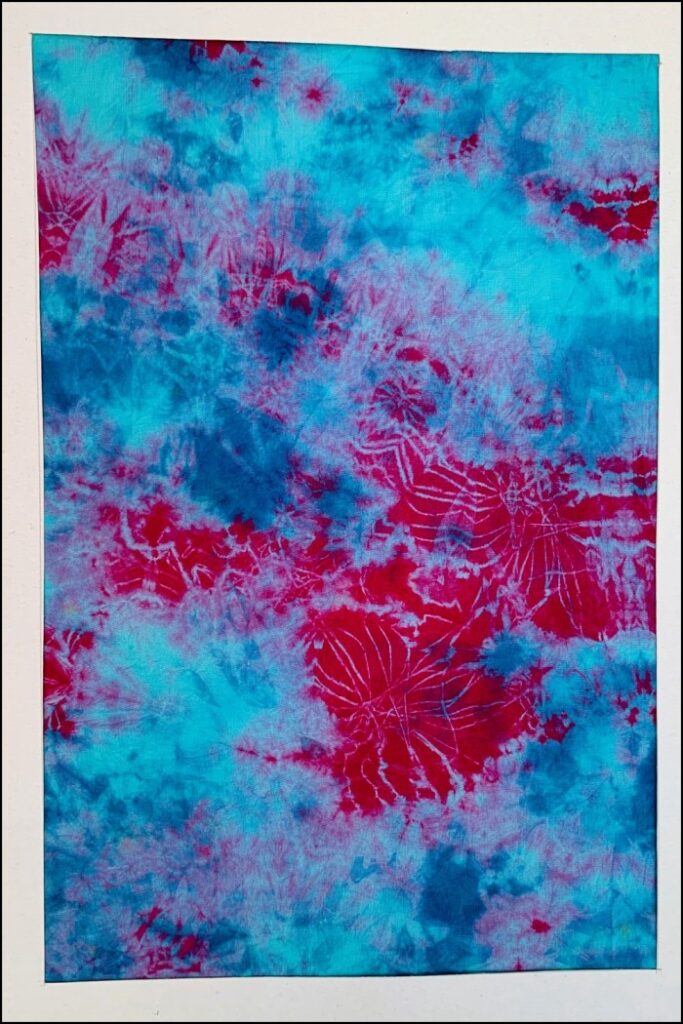
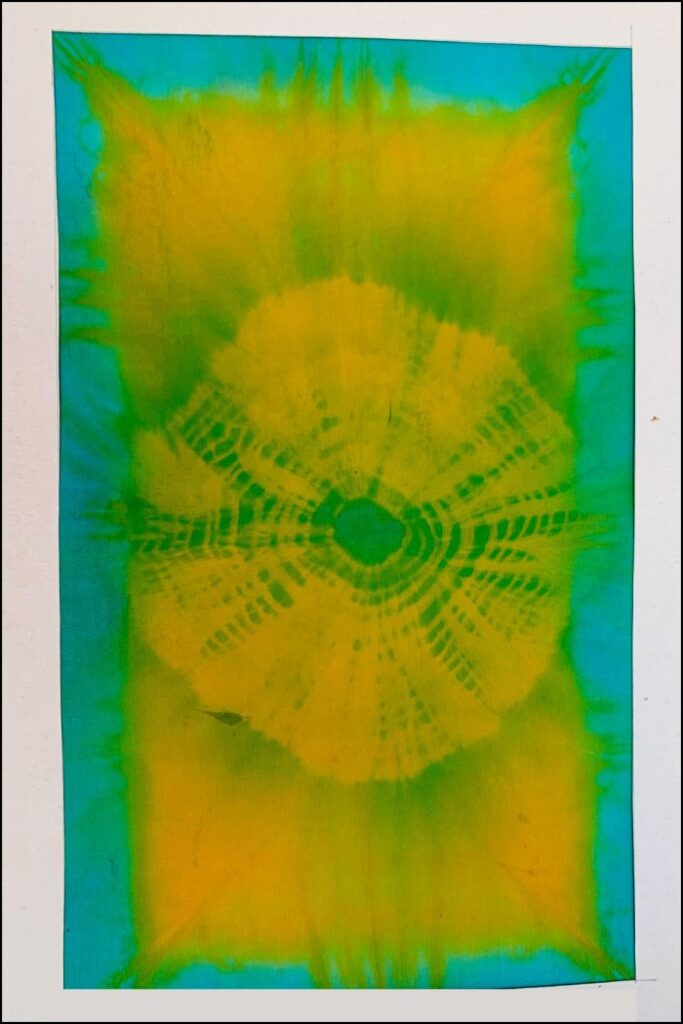
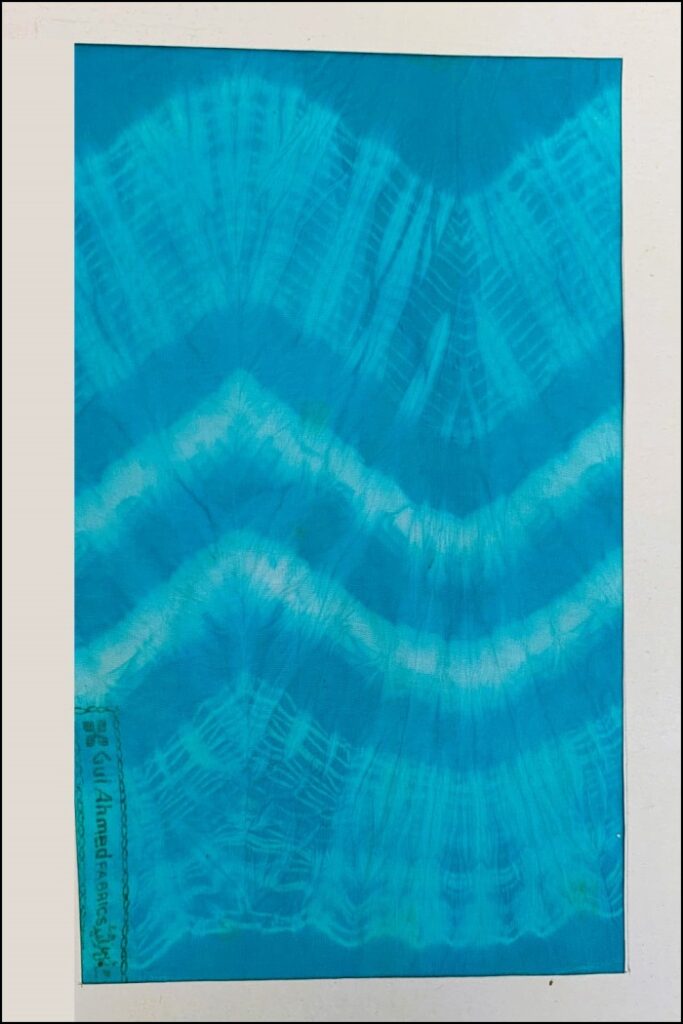
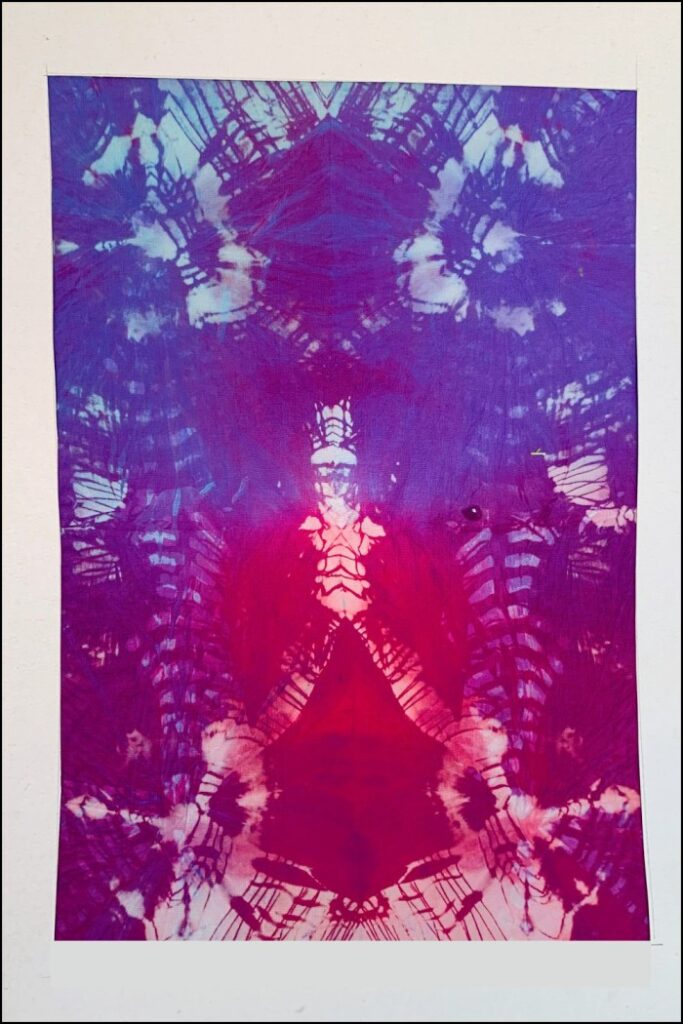
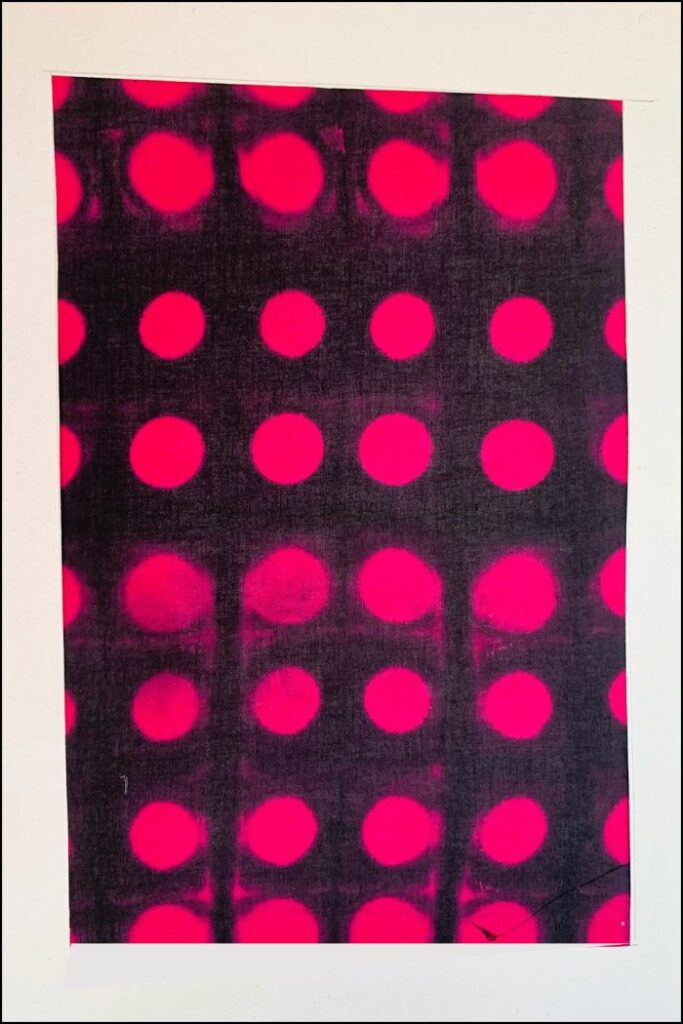
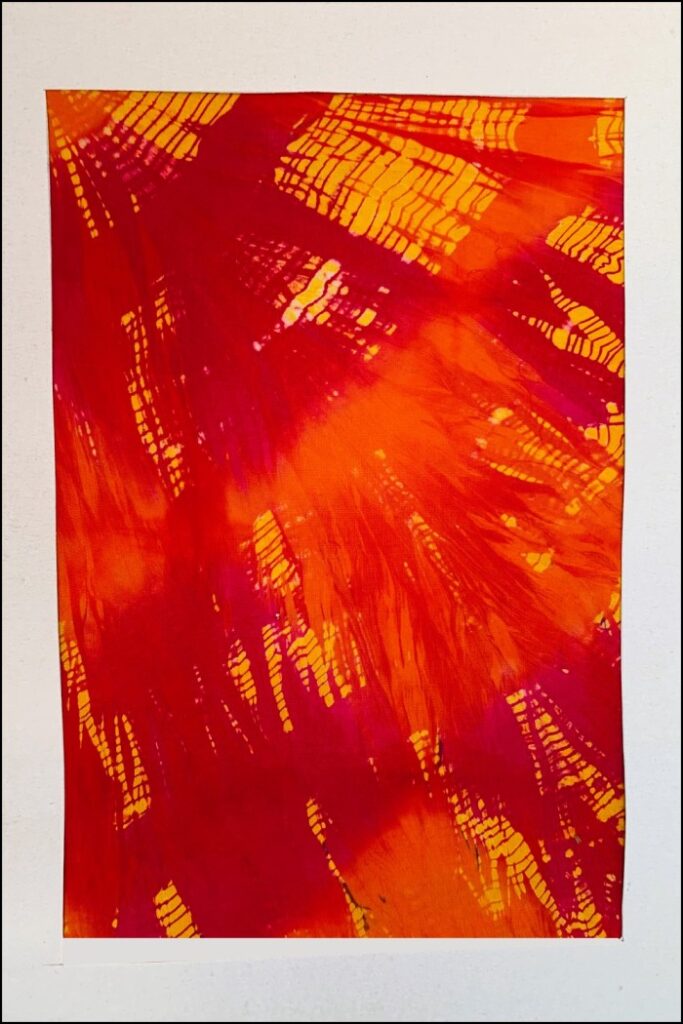
Rather than sticking to a single style or color palette, the student explored a wide range of techniques and color combinations.
Some designs are bright and bold, others soft and subtle. Some feature striking contrasts, while others focus on smooth, blended gradients. The result is a collection that feels dynamic and visually appealing.
Here are some types of designs included:
- Bold Spiral Patterns: Created with a central twist, which bursts with vibrant colors.
- Random Crumple Textures: Giving a cloudy, organic effect with unexpected shapes.
- Striped and Folded Designs: Using accordion folds for clean, repeating lines.
- Sunburst Effects: Rounded explosions of color that draw the eye inward.
- Two-tone minimalist design: Simple yet elegant, focusing on color harmony.
- Diagonal or asymmetrical patterns: Breaking up the balance for a more modern look.
- Layered color combinations: Achieved by recoloring or layering multiple colors for depth.
- Muted earth tones: Offering a calm, natural aesthetic compared to bright palettes.
Each page of the presentation book showcases a distinct mood and energy, demonstrating that tie-dye is a versatile art form.
The Artistic Process Behind the Collection
Creating this collection wasn’t just about dipping fabric in dye; it was a process of planning, experimenting, and improving.
Here’s how the project came together:
1. Research and Inspiration
- The student began by studying different tie-dyeing methods and color theory.
- Inspiration came from nature, fashion trends, and traditional textile design.
2. Material Selection
- The student chose 100% cotton fabric because it absorbs dye dynamically.
- They used high-quality dyes to keep the colors bright even after washing.
3. Pattern Planning
- The students experimented with different folding, tying, and scrunching techniques.
- They carefully planned some designs, while in others, they let the colors flow freely.
4. Dye Application
- The students carefully applied the colors, sometimes blending them and sometimes keeping them separate.
- They layered colors in some designs to create depth and complexity.
5. Color setting
- Each piece was wrapped and set for the required time to ensure color penetration.
6. Rinse and Finishing
- The final rinse revealed the true colors and patterns, often with surprising results.
Design Presentation – The Framed Look
Once the tie-dye pieces were complete, the focus shifted to the presentation.
- Chart Paper Background: For each page, two chart papers were chosen in colors that complemented the design.
- Center Square Cutout: This acts like a picture frame, keeping the viewer’s attention on the fabric.
- Price Mounting: The tie-dye piece was neatly placed and secured to lie flat and wrinkle-free.
- Spiral Binding: All pages were bound together, making it easy to flip and present the work professionally.
This approach transformed the project from a collection of fabric swatches into an exhibition-worthy art book.
Educational Value of the Project
This project teaches more than just fabric dyeing:
- Color Theory in Practice: Understanding how colors interact when mixed or placed together.
- Design Variety: Learning to create multiple effects using the same medium.
- Presentation skills: Understanding how framing, layout, and binding can enhance artwork.
- Craftsmanship: Attention to cleanliness, accuracy, and finishing touches.
Tips for Creating Your Own Tie-Dye Presentation Book
If you want to create a similar project, here are some tips:
- Plan before you color: Think about the colors and patterns you want for each page.
- Use quality materials: Good fabric and colors make a big difference.
- Maintain a consistent look: Use the same page size and frame style for a clean appearance.
- Complement the artwork: Choose background colors that make the design pop.
- Add details: Even short notes about the techniques used can make your project more educational.
Why Spiral Binding Works for This Project
Spiral binding is often overlooked in art presentations, but here’s how it works perfectly:
- Easy to flip: Viewers can move between pages without damaging the work.
- Flat Display: Pages lie flat, providing a better viewing experience.
- Expandable: More pages can be added if needed.
- Professional Finish: Gives the project a complete and well-presented feel.
Final Thoughts
The Tie-Dye Fabric Design Collection is a stunning example of how a simple medium like tie-dye can be transformed into a professional presentation. With 16 unique designs, each given its own space to shine, this project is as much about artistry as it is about presentation skills.
By combining color experiments, fabric techniques, and thoughtful display, the student has created an object that could easily be part of a textile exhibition or fashion portfolio.
It serves as a reminder that in art, the way you present your work is just as important as the work itself.

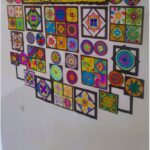
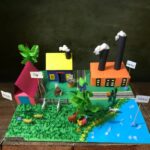

Pingback: DIY Popsicle Stick House | School Craft Project - 1thousandideas
Undeniably believe that which you said. Your favorite reason appeared to be on the web the simplest thing to be aware of. I say to you, I certainly get irked while people consider worries that they just don’t know about. You managed to hit the nail upon the top and defined out the whole thing without having side effect , people can take a signal. Will probably be back to get more. Thanks
I truly appreciate your thoughtful feedback. It’s great to hear that my explanation was clear and useful to you.
What’s Happening i’m new to this, I stumbled upon this I have found It absolutely useful and it has aided me out loads. I hope to contribute & help other users like its aided me. Good job.
Very informative
Wonderful blog! I found it while surfing around on Yahoo News. Do you have any tips on how to get listed in Yahoo News? I’ve been trying for a while but I never seem to get there! Thank you
Great perspective